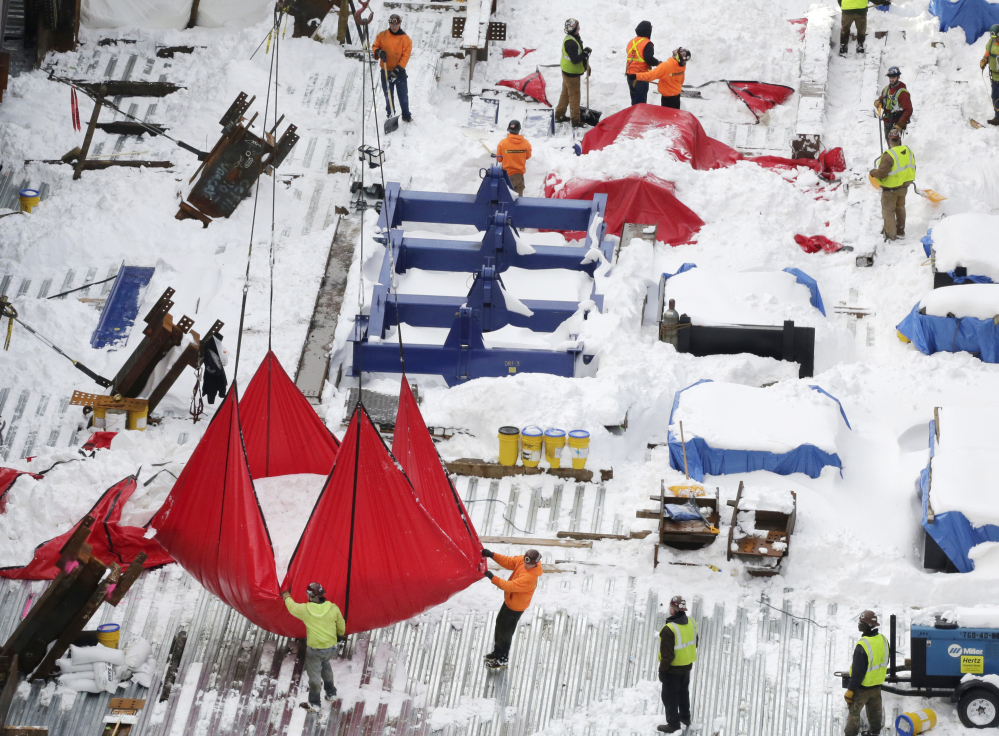WASHINGTON — The nation’s capital and its largest city both got walloped by the same near-record blizzard this weekend. But while Washington struggled to recover, New York City was mostly up and running Monday.
In the District of Columbia, schools and government offices, monuments, memorials and museums were all shut down. The Metro had an extremely reduced schedule, providing free rides as a goodwill gesture. Digging out remained such a huge challenge that Mayor Muriel Bowser sought federal disaster aid.
In New York, the subway and schools were open just a day and a half after the last flakes fell, and leaders praised themselves for getting this one right.
A look at the numbers helps explain the outcomes:
BUDGETS
The District of Columbia government sets aside $6.2 million a year for its 658,000 people, while New York’s snow budget is $77.5 million for its population of 8.4 million. The Big Apple’s snow budget and population are each about 12 times bigger.
SIZE
The capital covers 68 square miles, a fourth of New York’s 302 square miles. The district has 4,400 lane miles to clear, budgeting $1,400 per mile. New York has to clear 19,000 lane miles and budgets $4,000 per mile, almost three times as much.
SNOW FORCES
District officials deployed 1,200 employees and 727 pieces of equipment to clear streets. New York sent out 4,600 workers and more than 2,000 pieces of equipment, keeping its crews on 12-hour shifts so that half were on the streets at a time.
CONSEQUENCES
“I know other cities struggled,” said New York City Mayor Bill de Blasio. “We are so blessed to have the personnel, the training, the equipment that allows this city to turn on a dime. Things are not entirely normal today, but most of the city is operating well.”
Asked why New York schools are open while the district’s are closed, Washington’s emergency management director, Christopher Geldart, said, “It’s a total unfair comparison.”
“Is it a safe situation for those children that get there? That’s Mayor de Blasio’s call and his folks advising him. Here in the district we know our conditions and what our roadways look like and what it’s like for our residents and children out there, and we’re making the best decision we can make here.”
Most streets in downtown Washington were coated in a brown, slushy mess during the morning rush. Some lanes on major thoroughfares suddenly disappeared under snowbanks.
De Blasio had to do some damage control in Queens, where plows got stuck and people complained of being forgotten. And New York Gov. Andrew Cuomo acknowledged a miserable experience getting in from Long Island while the nation’s busiest commuter railroad ran a reduced schedule. But officials were able to focus on what went right this time.
During a blizzard in February 2010, New York’s transit system stayed open at first, stranding buses and blocking streets. This time early closings and a coordinated response enabled the city and state to reopen the roads more quickly.
“Because we put the travel ban in, sanitation (crews were) able to get out there and plow as well as they did,” de Blasio said. “And when the buses came back online, they could actually get around. It was really good decision-making.”
Copy the Story LinkSend questions/comments to the editors.



Success. Please wait for the page to reload. If the page does not reload within 5 seconds, please refresh the page.
Enter your email and password to access comments.
Hi, to comment on stories you must . This profile is in addition to your subscription and website login.
Already have a commenting profile? .
Invalid username/password.
Please check your email to confirm and complete your registration.
Only subscribers are eligible to post comments. Please subscribe or login first for digital access. Here’s why.
Use the form below to reset your password. When you've submitted your account email, we will send an email with a reset code.